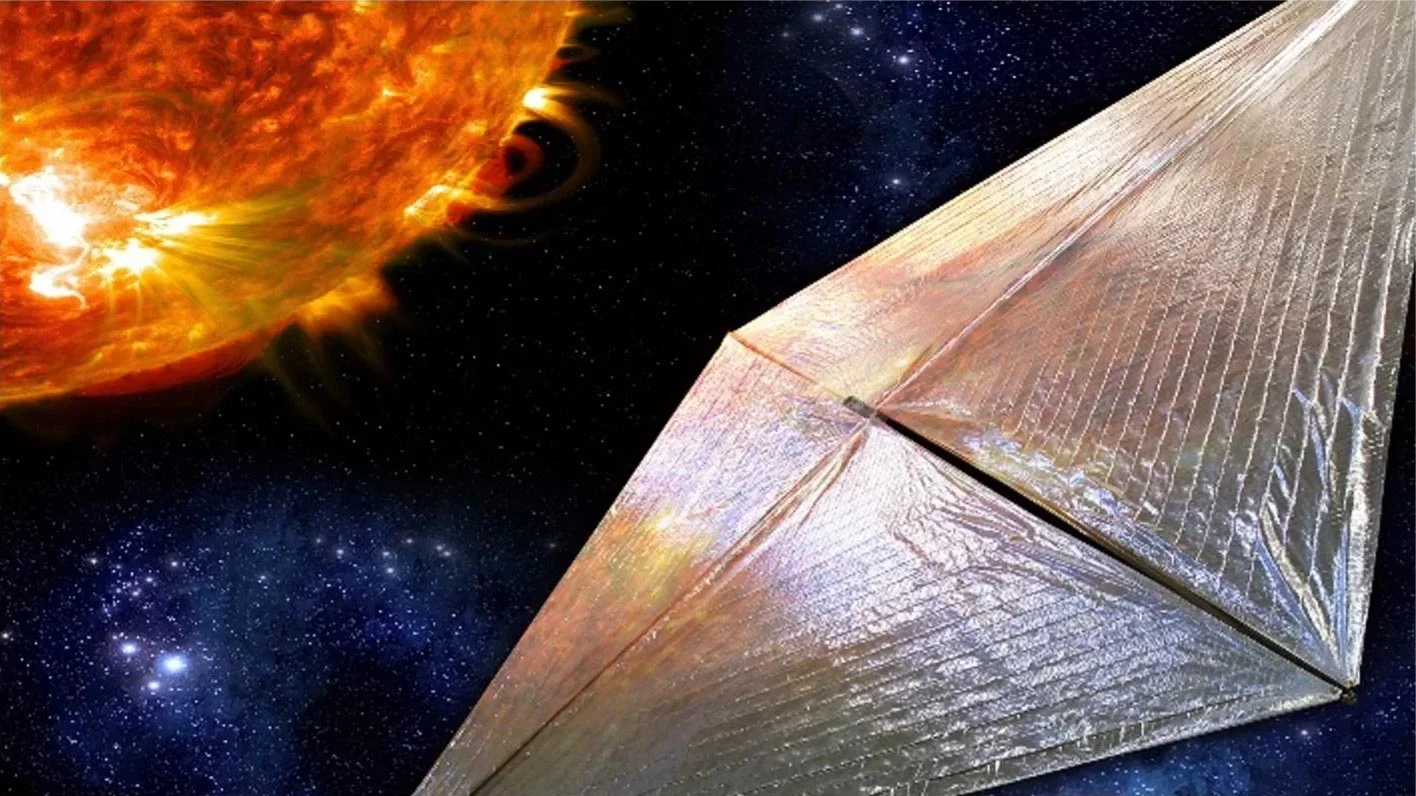"NASA is developing solar sail technology for deep space exploration. This innovative propulsion system, powered by sunlight reflecting off its surface, has recently achieved a new readiness level, making it suitable for future science missions. Solar sails offer a fuel-free, environmentally friendly method of propulsion, capable of propelling low-mass missions to novel orbits and distant planets. Credit: NASA" (ScitechDaily, Harnessing Helios: The Science Behind NASA’s Solar Sail Breakthrough)
In traditional form solar sails get their movement energy from the sun. The solar wind pushes that thing into the interplanetary journey. The solar wind is an effective thruster. However, its use is limited in the internal solar system, inside the asteroid belt.
But some active components may make those things more effective than they were. There are models where there are small gas pockets or gas tanks in the solar sail. And when solar energy hits the craft, it boils that gas.
There are also plans for the solar rocket engines. Those engine systems use liquid hydrogen as a propellant.
In those systems, the large parabolic mirror makes that propellant boil and expands it. The parabolic mirror drives sunlight in that propulsion system.
There could be a thermal element like carbon fiber or ceramic point, and the sunlight haets that element. When the system drives hydrogen into that point the heat expands it and forms the thrust. In some other versions, the system conducts solar panel energy to the thermal element. And that expands the hydrogen. Solar power also can used in ion motors. The ion accelerators can get their electricity from solar panels.
The solar sail can pull nuclear or antimatter rockets to the edge of the asteroid belt.
Solar sails are multi-use systems. The large surface of those sails can also act as a radar antenna. And they can use solar power to accelerate the craft into the journey. It's possible. Solar sails can covered with some other elements like plutonium or methane ice, and then laser rays will start to vaporize that material. Also, things like ion cannons can benefit the acceleration process. If solar sails use hybrid technology, that thing is more interesting than just sailing.
In some visions, there would be giant lasers in our solar system. There those laser systems accelerate the solar sails when they are too far from the sun. That allows them to transport space probes to the Kuiper belt.
NASAs breakthrough in solar sail technology is interesting because solar sails are cheap to make. They don't need internal fuel. The solar wind or particle flow from the sun accelerates solar sails. There is the possibility that solar sails can pull small nuclear or antimatter rockets to the edge of the asteroid belt. And then those rockets can continue their journey to the gas giants and the Kuiper belt.
The antimatter engine can produce an antimatter load from the solar wind. And that is one of the things, that makes solar sails interesting. In those cases, the solar sail will travel near the sun first. After that, the solar sail will open, and the particle load from the sun will accelerate to journey.
https://scitechdaily.com/harnessing-helios-the-science-behind-nasas-solar-sail-breakthrough/


No comments:
Post a Comment
Note: Only a member of this blog may post a comment.